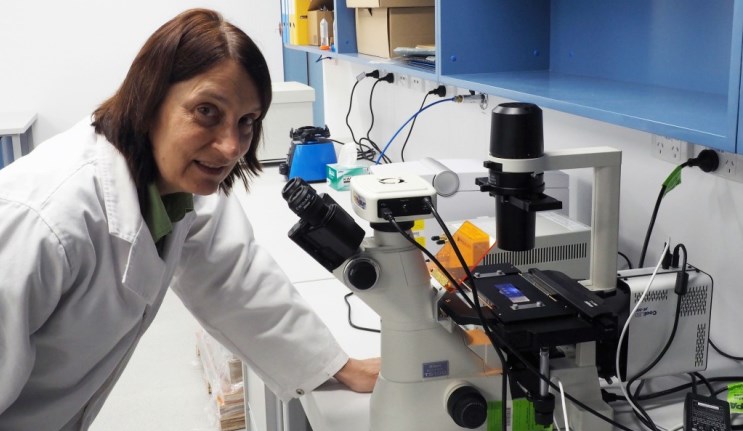
RESEARCH NEWS
New agreement opens the door to next generation cell therapies
Macquarie University and clinical-stage regenerative medicine company Regeneus Ltd have formalised an agreement to commercialise a breakthrough cell selection technology. It will allow high potency secreting stem cells to be identified and selected for the manufacture of next generation cell therapies.
The technology was developed in a research group led by Professor Ewa Goldys and Dr Guozhen Liu at the Australian Research Council’s Centre of Excellence for Nanoscale BioPhotonics (CNBP) at Macquarie, and uses innovative cell labelling technologies to identify and select cells based on the molecules that they are secreting rather than their surface characteristics used currently. Cells secrete various molecules such as cytokines and growth factors that reflect their function and drive therapeutic effects.
Professor Goldys, Deputy Director of the CNBP, explains: “Cells can secrete pro-inflammatory cytokines, as part of the body’s sickness response mechanism or anti-inflammatory cytokines that play a role in healing. We can regard anti-inflammatory cytokines as, in a sense, cancelling out the effects of pro-inflammatory cytokines.
“Our research allows us to detect which cells are most strongly pumping out specific anti-inflammatory cytokines. With this information we are a step closer to controlling and regulating the immune response in the body in a novel way, by using the selected cells. Our approach paves the way for localised immunosuppression in a wide range of diseases, including arthritis.”
Designer cells
Dr Graham Vesey, co-founder and Chief Scientific Officer at Regeneus, says “This new identification and selection technology opens the door to better understand and control a whole host of diseases. It holds the potential for what may be called ‘designer cells’ where a cell line is developed that is enriched for a secretion capacity which is uniquely matched to the needs of the disease in question.”
“At the CNBP, it’s not just about our scientific discovery, we’re also committed to commercial and real-world translational outcomes with long-term societal value,” Professor Goldys adds.
Learn more about the Centre of Excellence for Nanoscale BioPhotonics.